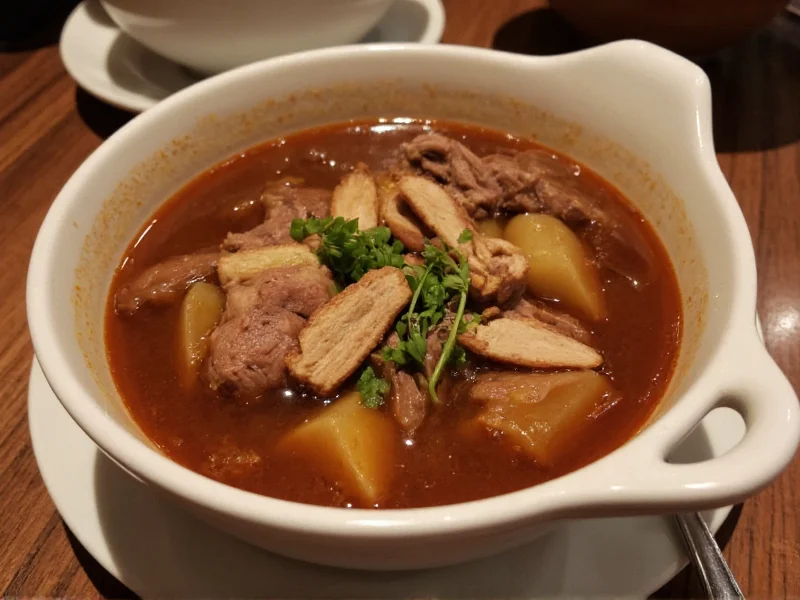Creating exceptional beef bone marrow soup requires understanding both technique and nutritional science. This complete guide details the optimal preparation method while explaining why this ancient food preparation technique delivers unique health benefits unmatched by conventional broths. Whether you're seeking gut-healing properties, immune support, or simply a deeply flavorful culinary foundation, mastering bone marrow soup preparation opens doors to enhanced nutrition.
The Science Behind Bone Marrow Nutrition
Unlike standard bone broth, marrow-focused preparation preserves heat-sensitive nutrients within the marrow cavity. Research shows that marrow contains higher concentrations of certain nutrients compared to surrounding bone tissue. The extended simmering process (minimum 12 hours) breaks down collagen into gelatin while extracting marrow fats that carry fat-soluble vitamins.
| Nutrient | Per 1 Cup Serving | Primary Health Benefit |
|---|---|---|
| Glycine | 1,200-1,500mg | Supports digestion and liver detoxification |
| Glucosamine | 800-1,000mg | Promotes joint health and mobility |
| Conjugated Linoleic Acid | 250-300mg | Supports healthy metabolism and inflammation response |
| Vitamin K2 (MK-4) | 15-20mcg | Directs calcium to bones and teeth |
Authentic Beef Bone Marrow Soup Recipe
Traditional preparation methods maximize both flavor and nutritional yield. For optimal results when making beef bone marrow soup, select grass-fed marrow bones with diameter of 1-2 inches. The roasting step before simmering develops complex flavors through the Maillard reaction while helping separate marrow from bone.
Essential Ingredients
- 4 pounds beef marrow bones (ask your butcher for "soup bones" with intact marrow)
- 2 tablespoons apple cider vinegar (helps extract minerals)
- 1 large onion, quartered
- 2 carrots, roughly chopped
- 3 celery stalks with leaves
- 4 garlic cloves, smashed
- 1 tablespoon whole black peppercorns
- 2 bay leaves
- Small bunch fresh parsley
- Fine sea salt to taste
Step-by-Step Preparation
- Preheat oven to 400°F (200°C). Arrange bones in single layer on baking sheet
- Roast for 30-40 minutes until bones develop deep brown color
- Transfer bones to 6-8 quart stockpot, covering with 3 inches of filtered water
- Add vinegar and vegetables, bring to gentle simmer (do not boil)
- Skim foam during first 30 minutes of simmering
- Cover partially and maintain 180-190°F (82-88°C) for 12-24 hours
- Strain through fine mesh sieve, discard solids
- Cool and refrigerate; remove solidified fat layer before use
Maximizing Nutritional Value
The simmering time for bone marrow broth significantly impacts nutrient extraction. Studies indicate that collagen conversion peaks at approximately 18 hours, while mineral extraction continues up to 24 hours. Avoid boiling, as temperatures above 200°F (93°C) can degrade delicate nutrients in the marrow. For those following keto friendly bone marrow soup preparation, the natural fat content makes this an ideal high-fat, low-carb nourishment.
Traditional bone marrow soup preparation across cultures often includes adding marrow scooped directly from roasted bones. This technique preserves heat-sensitive nutrients that would otherwise degrade during extended simmering. To incorporate this method, roast additional marrow bones specifically for serving, then spoon the softened marrow into finished broth.
Common Preparation Mistakes
Many home cooks make critical errors when preparing bone marrow soup that compromise both flavor and nutrition. Using conventionally raised bones introduces potential toxins stored in fat. Skipping the roasting step results in bland, one-dimensional flavor. Over-boiling creates bitter compounds while destroying delicate nutrients. Understanding these pitfalls ensures your homemade bone marrow soup delivers maximum benefits.
The difference between beef bone broth vs bone marrow soup lies primarily in bone selection and preparation focus. Standard bone broth emphasizes gelatin extraction from joints and knuckles, while marrow-focused preparation targets the nutrient-rich center of long bones. For optimal gut health benefits, combine both approaches by including a mix of marrow bones and joint bones in your preparation.
Serving Traditions and Modern Adaptations
Cultures worldwide have valued bone marrow soup for centuries. In traditional Chinese medicine, it's prescribed for kidney support. European culinary traditions often serve roasted marrow bones alongside the broth. Modern adaptations include using bone marrow soup as base for ramen or incorporating it into paleo-friendly risotto.
For therapeutic use, consume 8-16 ounces daily on an empty stomach. The gelatin content supports gut lining repair, while marrow fats enhance absorption of fat-soluble vitamins. Those seeking bone marrow soup for gut health should consider adding fermented vegetables like sauerkraut to further boost digestive benefits.











 浙公网安备
33010002000092号
浙公网安备
33010002000092号 浙B2-20120091-4
浙B2-20120091-4